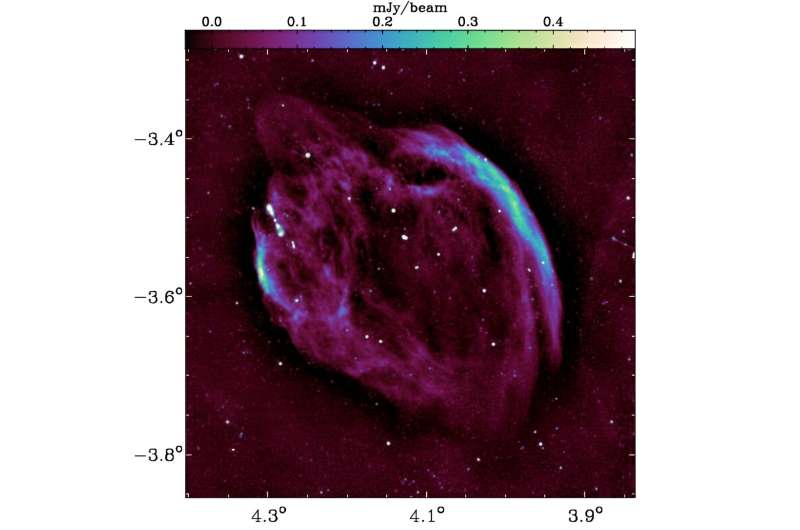November 30, 2023 report
This article has been reviewed according to Science X's editorial process and policies. Editors have highlighted the following attributes while ensuring the content's credibility:
fact-checked
preprint
trusted source
proofread
Astronomers inspect supernova remnants with MeerKAT

Using the MeerKAT radio telescope, astronomers from the National Radio Astronomy Observatory (NRAO) in Charlottesville, Virginia, and elsewhere have investigated a batch of 36 high latitude supernova remnants. Results of the observations campaign, published Nov. 20 on the pre-print server arXiv, deliver important insights into the properties of these remnants.
Supernova remnants (SNRs) are expansive and diffuse formations formed as a consequence of a supernova's explosion. They harbor ejected material expanding from the explosion and other interstellar material that has been swept up by the passage of the shockwave from the exploded star.
Studies of supernova remnants are important for astronomers, given that they play a crucial role in the evolution of galaxies, dispersing the heavy elements made in the supernova explosion and providing the energy needed for heating up the interstellar medium (ISM). SNRs are also believed to be responsible for the acceleration of galactic cosmic rays.
Recently, a team of astronomers led by NRAO's William Cotton chose 36 poorly studied Galactic SNRs to observe with MeerKAT, with the main aim of shedding more light on their properties.
"We present full Stokes MeerKAT L band (856–1,712 MHz) observations of 36 high latitude supernova remnants," the researchers wrote in the paper.
The observations found that two of the 36 observed sources are not SNRs. The object designated G30.7−2.0, which was initially classified as an SNR, is a structure consisting of three relatively bright background sources appearing to form an arc. The second one, G15.1−1.6, appears to be more likely to be a region of ionized interstellar atomic hydrogen (HII).
The images show that at least half of investigated SNRs exhibit blowouts or protrusions. Most of the blowouts seem to indicate that something is breaking through the outer edge of the remnant's shell. The astronomers noted that this discovery was only possible due to the unprecedented sensitivity and high fidelity of the MeerKAT images to extended emission, as most of these blowouts show an extremely low radio surface brightness.
The study allowed the researchers to explore the magnetic fields of the SNR sample. For instance, they found that the magnetic field inside the remnant G327.6+14.6 has a largely radial magnetic field whereas SNR G4.8+6.2 has a magnetic field that is mostly tangential except in the blowout regions where it is radial.
The astronomers also found that several of the investigated supernova remnants showcase a bilateral or barrel-shaped structure. Such structures have been ubiquitous in mature SNRs.
"Mature SNRs typically show a bilateral or barrel-shaped structure, indicative of the expansion inside an approximately uniform ambient medium with a relatively uniform magnetic field," the authors of the paper explained.
More information: William Cotton et al, MeerKAT 1.3 GHz Observations of Supernova Remnants, arXiv (2023). DOI: 10.48550/arxiv.2311.12140
Journal information: arXiv
© 2023 Science X Network





















